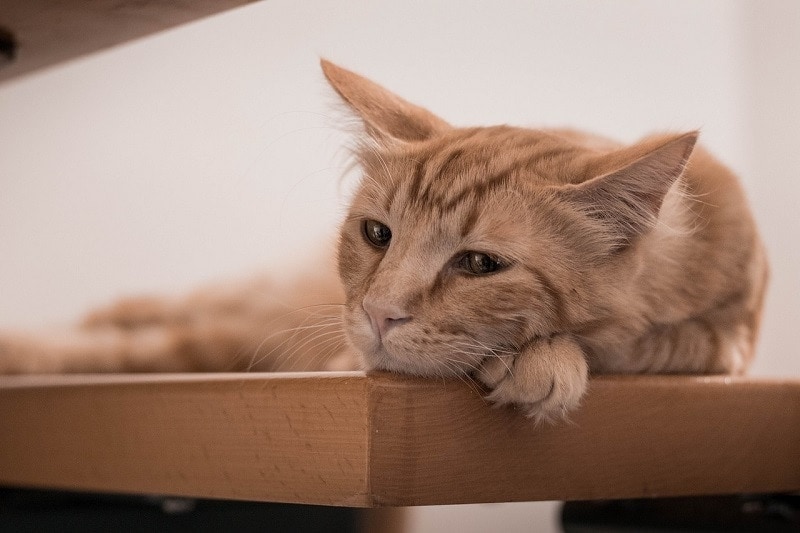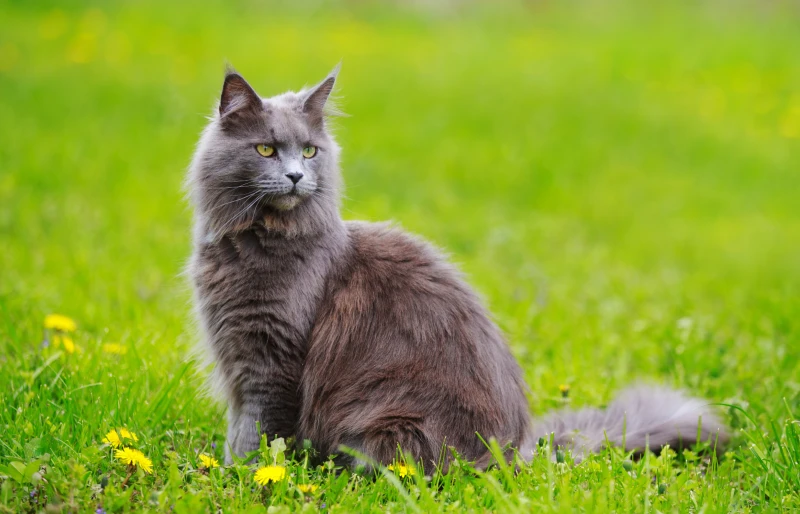Do Cats Get Winter Coats? Vet-Reviewed Facts & FAQ
Updated on
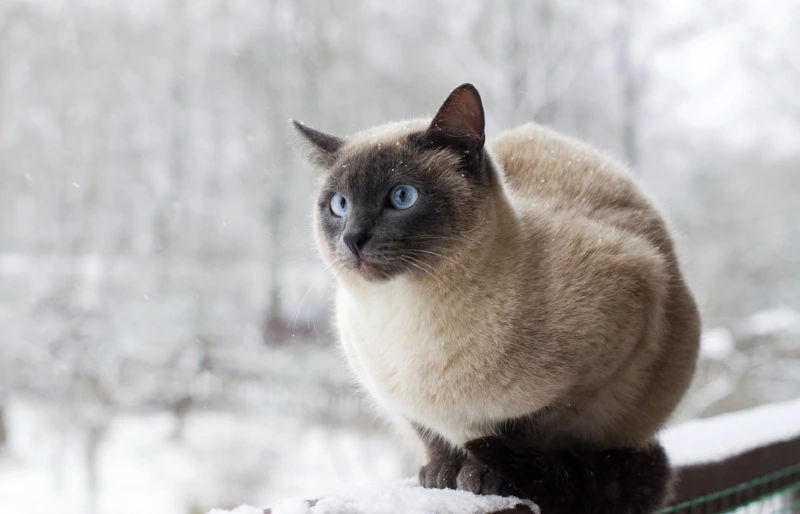
Click to Skip Ahead
Talk to any cat owner at the end of winter, and they’ll all probably tell you the same thing: Their beloved cat seems to have turned into a never-ending shedding machine. There are suddenly hairs everywhere—on the cat, on their clothes, on the cushions, and all over the house! Basically, the shedding season is well and truly underway. So, yes, cats do get winter coats!
A cat’s coat is made up of two layers, including the undercoat. In summer and winter, this undercoat provides additional insulation against heat and cold. But when the seasons change to fall and spring, respectively, it’s time for cats to shed the old hairs to make way for new ones.
Read on as we discuss cats’ winter coats, how their summer coats differ, and what you can do to keep their fur nice and shiny throughout the seasons.
Why Do Cats Get Winter Coats?
Most cats have a regular coat of fur, which is made up of two layers:
- The protective outer layer, which is composed of guard hairs
- The undercoat, which is made up of fine, soft hair for additional insulation
While the protective coat sports the cat’s color and any patterns, the undercoat is the fluffiest layer. This undercoat changes with the seasons, becoming thicker as cold weather approaches.
Cats that live in cold climates or that venture outside regularly develop an even thicker “winter coat” to protect them. That said, all cats should have access to warm shelter when temperatures drop below 45°F.
In contrast, as the summer season approaches, a cat’s coat adapts by becoming shorter and thinner. This adjustment enables cats to regulate their body temperature and stay cool in the heat. It’s also the primary reason that cat shedding also seems more intense during the summer months, as cats naturally shed their summer coat for 2 to 3 weeks in anticipation of colder weather.
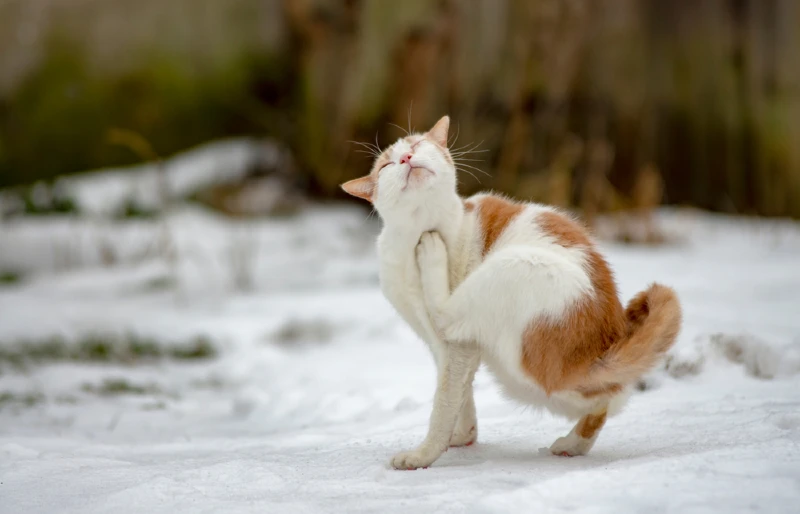
When Do Cats Grow Their Winter Coats?
Cats generally begin to grow their winter coats as colder temperatures approach, around mid-fall. Conversely, much of their undercoat will start to fall out toward the end of spring. This growth and shedding cycle is regulated by exposure to daylight, which explains why their winter coats begin to grow when the days get shorter.
Cats that live entirely indoors will naturally grow a winter coat that is less dense than those that spend part or all of their time outdoors, so if you have an indoor cat, you might not notice a huge difference in the thickness of their fur. Unfortunately, it doesn’t stop them from shedding!
Should You Buy a Sweater for Your Cat to Provide Them With Extra Warmth in Cold Weather?
Is there anything cuter than a little cat wrapped in a miniature winter coat? But as charming as this idea may be, it’s not usually necessary to deck your kitty out in the latest winter fashion, and most of the time, they don’t really like it.
Most cats don’t need a sweater because their undercoat is usually enough to keep them warm. However, there are specific situations in which a human-made cat coat can be beneficial. For example, cats that are sick or old or have undergone surgical procedures involving the shaving of various parts of their body may need the additional heat.
Also, certain hairless cat breeds, like the Sphynx, will definitely benefit from the added insulation that a cat sweater provides when temperatures drop significantly.
Tips to Keep Your Cat’s Coat Healthy and Shiny
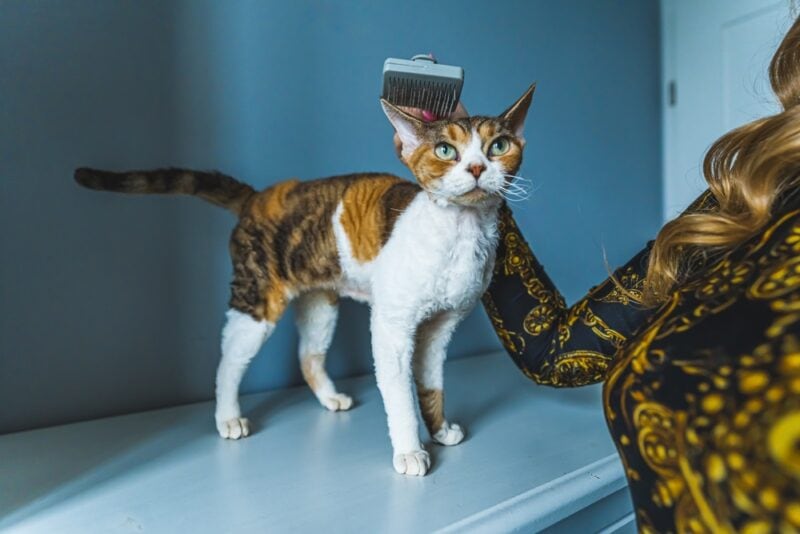
Caring for your feline friend’s coat is important all year round, but they may need extra help during seasonal changes. Here are the steps that you can take to make this transition easier:
- Make it a daily routine to brush your cat’s fur. This removes debris, dandruff, dead hairs, and knots and helps distribute natural skin oils throughout their coat, keeping it soft, shiny, and silky. This activity may also strengthen your bond with your pet, as they may come to enjoy these grooming sessions.
- Check with your vet if supplements are necessary. Omega-3 fatty acids and fish oil supplements can help maintain healthy and smooth skin and coat, which is especially beneficial if your cat’s skin tends to dry out or become irritated due to the lack of humidity in your home during the winter months.
- Pay extra attention to your cat’s diet during the colder months. Cold temperatures can place additional stress on your cat’s body, making a high-quality, well-balanced diet even more important. Therefore, feeding your feline companion with an adequate balance of protein, carbs, fatty acids, minerals, and vitamins will help keep them in top-notch shape. It may also reduce excessive shedding.
Important Note on Nutrition: Your cat may need extra calories in the winter, so you should consult your vet for guidance on meeting their nutritional needs during the colder months.
Final Thoughts
Your cat’s winter coat is a natural adaptation to the changing seasons. Indeed, cats can naturally adjust to the weather, growing denser and thicker undercoats to combat the cold and then transitioning to shorter, lighter fur to keep cool in the summer. While it may be tempting to dress your cat in a cute sweater, rest assured that most cats are well-equipped to manage winter’s chill on their own, thanks to that natural insulation.
That said, you can ensure that your feline friend stays warm during the winter by providing them with a high-quality diet that includes sufficient calories to give them the extra boost necessary to grow their own winter coat!
Featured Image Credit: Rodica Vasiliev, Shutterstock



